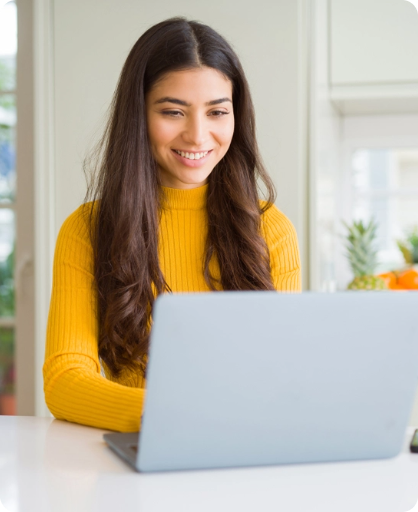What is Multichannel Inventory & How to Manage it Effectively?
If the case for selling on multiple channels wasn’t appealing enough before, recent months have made it abundantly clear that sellers should be active in more than one store.
But expanding to new channels doesn’t always come naturally for sellers. Often, sellers are challenged with the need to scale operations quickly — and one of the most critical tasks involves managing inventory on more than one channel (also known as multichannel inventory management).

What is Multichannel Inventory Management?
Multichannel inventory management refers to overseeing stock levels, reorders, and inventory forecasting across sales channels. It helps track and plan for inventory turnover and is where supply meets demand.
Single-Channel vs. Multichannel Inventory Management
When you’re selling on one channel like Shopify, BigCommerce, or Amazon, you’re usually managing one pool of inventory, one set of sales data, and one set of product listings. Your main challenges are controlling costs and ensuring there are no discrepancies between your listed quantity and what’s actually in your eCommerce warehouse, what’s being shipped, and what’s being restocked.
Each time you add a new sales channel, this process becomes exponentially more cumbersome. Multichannel retailing forces you to factor in various buying behaviors, turnover rates, return frequencies, shipping speeds, and demand across channels — in addition to the usual complexities of inventory management.
You not only have to rebalance inventory according to what’s in your warehouse but also what’s concurrently listed on multiple channels. For example, if you sell the same products on various channels, you’ll need to manage and merge SKUs to know which are identical products and manage the inventory accordingly.
At any point, orders could be flying in from multiple channels at the same time. It’s easy to lose track of stock levels and rack up backorders. Without a system built specifically for multichannel inventory management, it’s nearly impossible to keep your head above water and prevent capital from getting tied up in inventory as you grow.
Qualities of a Sound Inventory Management System

A software can alleviate hurdles and risks that come with running a multichannel inventory business. Most sellers find that they need some combination of the features listed below when evaluating inventory management software for their present needs and growth.
Integrations with Marketplaces, Warehouses, 3PLs, and Apps
The right system will have direct integrations with the marketplaces, vendors, 3PLs, and apps you work with that affect inventory tracking. It should serve as the central command center, where you have full visibility over your stock’s status and location.
This allows for complete, consistent, and accurate data, which is needed for multichannel inventory management. It keeps your whole team — from your warehouse staff to purchasing managers — on the same page.
Near Real-Time Inventory Updates
One core component of any eCommerce inventory solution for sellers is the ability to automatically and continually update listed quantities. You should never have to update quantities by hand. When an order comes in, your multichannel inventory management software should immediately reserve inventory for it (even as payment is processing) and update your listing to prevent backorders.
You should also set inventory thresholds or buffers so that once total inventory for an SKU reaches a specific level, it becomes available for purchase on only one channel to prevent overselling.
Forecasting
Demand forecasting is foundational to a scalable inventory plan. To be effective, your system needs to account for many more factors outside of historical sales data. Those factors include:
- Lead times
- Holding costs
- Shipping and handling costs
- Manufacturing and product costs
- Profit margins
- Sales velocity
Look for a multichannel inventory management system that doesn’t just alert you when stock is running low. Find one that proactively suggests ways to optimize inventory based on new trends, sales variance, and estimated costs or profits on each marketplace.

Reorder Points and Purchase Orders (POs)
As your forecasting becomes more nimble, the purchasing process needs to evolve as well. Too many merchants still create POs by hand, then file them outside of their inventory system. This requires someone to update stock levels inside the software then manually.
The ideal multichannel inventory management system includes PO automation. It allows you to create POs on the fly by auto-populating standard information and offering one place to check order statuses (drafts, approvals, rejections, and sent orders). This capability also enables you to set custom to reorder points.
You should be able to whip up a PO for any SKU if demand fluctuates suddenly for just in time inventory. This helps keep just enough inventory on hand, so you don’t overspend on inventory upfront and all of its subsequent warehousing costs.
Reporting and Analytics
Inventory plans are always changing to adapt to world events or changes to your businesses. Needless to say, you need to have the right data and distribution metrics accessible at any time to make intelligent decisions. At a minimum, your multichannel inventory management software should show how your inventory performed over the last week, month, quarter, and year(s). It should highlight total sales, profit, and more for each channel you sell on, allowing you to identify bestsellers as well as slow-moving products.
For day-to-day multichannel inventory management, your software should let you drill into live counts, inventory days on hand, days until out-of-stock, stock out/opportunity costs, inbound shipments, returns, and more.
Kitting and Bundling
If you plan on offering multipacks or virtual bundles, make sure your multichannel inventory management software can track stock around the component and master SKUs. For example, if a buyer purchases a bundle containing shampoo and conditioner, your software should subtract one from the shampoo SKU, conditioner SKU, and bundle SKU.
Rather than having to pre-package items as kits or bundles, you can now sell them as single or bundled units—just make sure you’re able to track and route them appropriately.

2 types of Automated Multichannel Inventory Management Solutions
While the software is the most reliable solution for multichannel inventory management, not all software is created equal. Some systems are cheaper and more restricted in their capabilities, while others are built to support end-to-end operations. In many cases, you get what you pay for.
Basic
There are some free or low-cost options available to small and mid-sized sellers. These are often cloud-based. Some platforms only work with a few channels and are specifically built for specific business types, like drop shippers. Standard features include automatic stock updates, order tracking, and alerts when an item is running low in stock. Many offer simple sales reports or cost analyses, as well.
Advanced
Robust multichannel inventory management systems can integrate into a multitude of sales channels, services, and software. They’re more scalable and customizable to your business needs. While they offer flexible inventory management tools, they provide many other tools outside of this, helping to optimize your product data, listings, pricing, and different workflows. They play nicely with 3PLs, which can use the data within your software to pick, pack, and ship items as efficiently as possible.
Conclusion
Multichannel inventory management can be significant growing pain for any multichannel business. From potential stockouts to confused orders, there are many ways in which multichannel inventory management can run amok without the right tools in place.
Get ahead of potential issues by identifying operational inefficiencies that will only worsen when new channels are thrown into the picture. Take the time to explore the inventory solutions at your disposal. Whether you choose a primary platform or a more advanced solution, like the Shiprocket Fulfillment, know when to invest in multichannel inventory management software to help make the job better and more comfortable.







